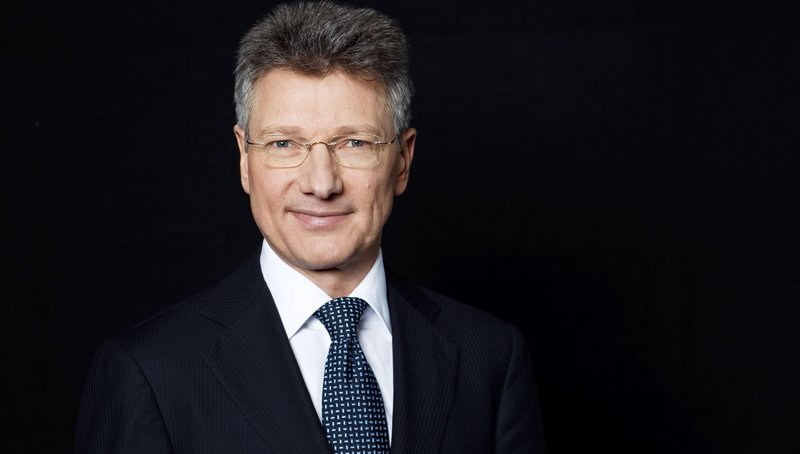Focus of Networked Mobility Must Be on People, Not Their Data
- Dr. Elmar Degenhart, Continental CEO, advocates cross-industry cooperation and transparent vehicle networking
- Zero accidents in road traffic no longer a utopian vision
- No compromising on data protection and security
Hanover, March 20, 2014. Work on future mobility must focus on end customers and their interests. "Traffic accidents must be relegated to the past. This is no longer a utopian vision! Indeed, a protective jacket of vehicle data and information from other traffic participants will enable cars of the future to get better all the time at avoiding accidents," noted Dr. Elmar Degenhart, CEO of Continental AG, in an address at the VDA Congress in Hanover on Thursday. He coupled this statement with the demand: "If we continue to network cars and make them part of the Internet, people and their safety must be the focus of attention and not merely just their data. We are convinced that safety and accident prevention are compatible with data protection and security."
As Degenhart sees it, the car of the future will be supplied with information from the Internet. In return, the car will transmit data from its own sensors to an intelligent infrastructure. It will thus be in constant dialog with the Cloud and other vehicles. This will enable it to constantly look "around the corner" and grasp potential dangers well ahead of time. It will act like a foresighted friend and companion, keeping its driver informed in good time as to the momentary traffic situation and advising the driver as to the next response the vehicle “has in mind”. The car will thus decelerate already before a black spot pops up. In Degenhart's view, transparency like this ups the confidence of drivers in assistance systems.
It likewise makes it possible to further ensure data security and data protection. In point of fact, "Technologies like distinct in-car computer and software architectures and firewall technologies have what it takes to adequately protect the vehicle from external attacks. And as for data protection: our experience has shown that very many networked services do not even require that the identity of the motorist be known. Anonymous information as to position, time, and incident is, for example, fully sufficient to enable vehicles to inform one another about dangers such as black ice or obstacles on the road," explained Degenhart.
"In the case of services requiring personal data, car drivers must always be able to choose whether they want to pass on data, and, if so, what data. The recipe for success in the case of the networked vehicle is confidence built on driver dialog and procedural transparency," emphasized Degenhart.
Despite major technological and infrastructural challenges, the CEO of the international automotive supplier, tire manufacturer, and industry partner exuded confidence. Most notably the automotive industry, he continued, has experience in developing and making million-fold use of the latest technologies. It has proven this often enough throughout its long history. Degenhart thus made an appeal for cross-industry collaboration: "The networked vehicle links different sectors of industry in a completely new way. This means that in the future, the automotive and IT industries will have to work together even more closely. We are already doing this with our cooperation partners IBM, Cisco, and Nokia HERE; together, we are paving the way for comfortable, energy-efficient and safe motoring, both on the world's roads and on the data highway," Degenhart pointed out.
Continental counts today among the leading manufacturers of driver assistance systems like Emergency Brake Assist (EBA). Since the first series project, in 1999 for the Mercedes S-Class, the company has realized more than 100 assistance system projects worldwide for automakers. Driver assistance systems likewise constitute the basis for the development of automated driving. Continental is, inter alia, involved in a research partnership with the BMW Group. The two companies are pooling development capabilities to identify the long-term prerequisites for series introduction of highly automated driving on European freeways.
Continental also offers leading networking technologies for the car. The company has, in fact, already networked a total of 26 million vehicles worldwide with telematics units. These units take the form of in-car transmitters and receivers that are by now facilitating a rapid Internet hook-up using ultra-modern LTE modules (long-term evolution / fourth generation mobile radio standard). They can be used worldwide in all vehicle categories. In international research projects, Continental is, moreover, strongly committed to making headway in car-to-car (C2C) communication technology.
By means of vehicle networking, Continental intends to create added value for motorists and other road users. The automatic emergency call system (eCall), for example, can save lives by ensuring that help arrives more quickly at the scene of an accident. The European Commission is mandating eCall for new vehicles as of 2015. In rural areas, the Commission expects this to cut the average time needed for help to arrive by half. In urban areas, the response time will likewise drop considerably. Another example is networked navigation, in which vehicles inform each other of traffic jams or obstacles along a route. It makes for greater safety, comfort, and efficiency in road traffic.
The 16th Technical Congress of the VDA takes place on March 20 and 21 at the Hanover exhibition center. Vehicle safety and electronics as well as the environment, energy and e-mobility are the main topics at the congress. Continental is hosting the congress and taking part with addresses on vehicle networking, automated driving, and increasing efficiency in drive technology. The company will also be presenting an automated-driving prototype vehicle in the accompanying technical exhibition.

